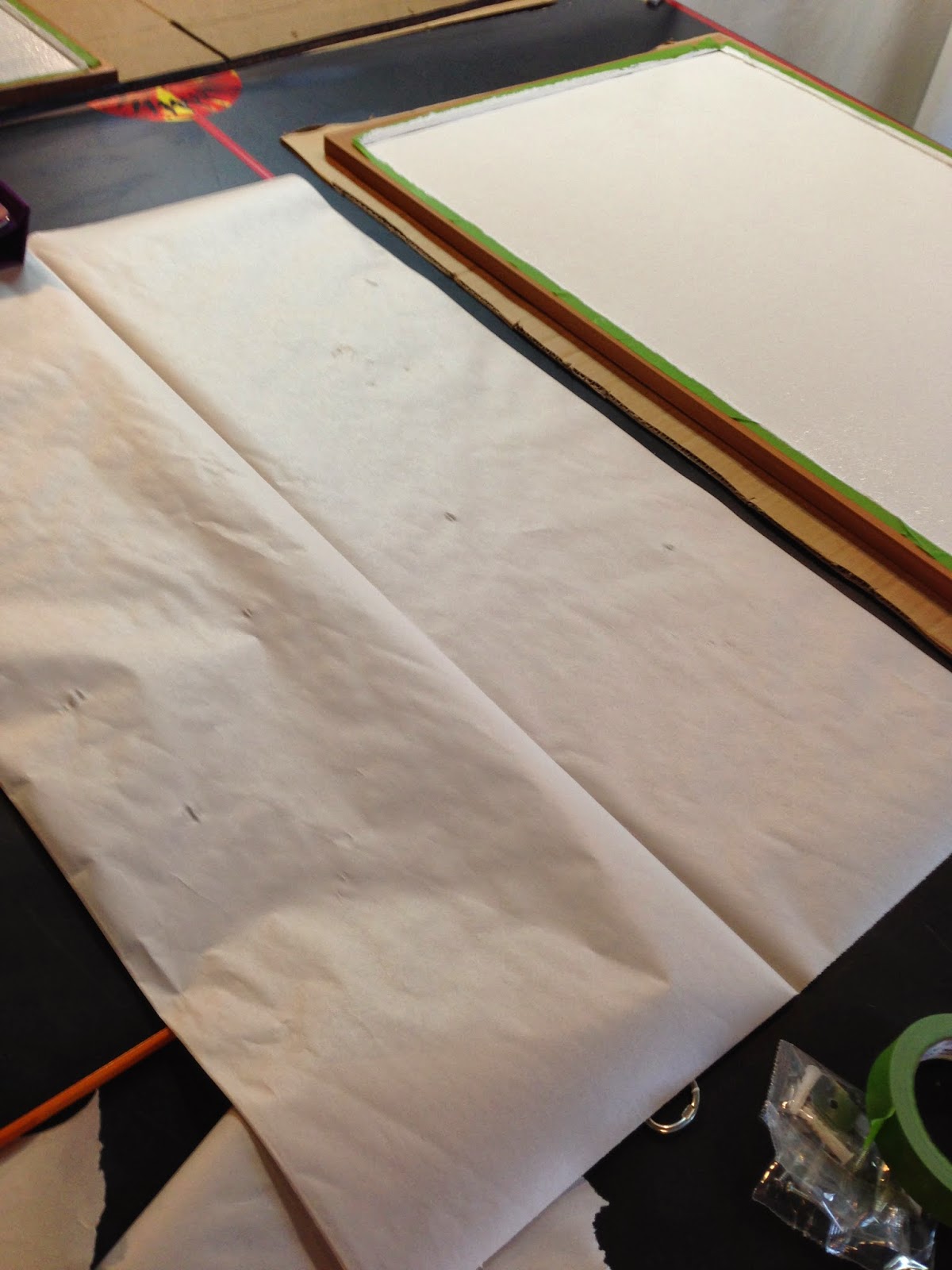Statement Art for Your Walls!
First off, mask off the frames then prime with any white paint. I had some white wall paint with primer built in but still gave it two coats. We used a 6" roller along with a small foam brush for the edges. Once that is dry you are ready to transfer or draw your pattern onto the corkboard.
Sorry these pictures are so boring and don't even show my funny face!
 Choose a motif or design you have seen from pinterest or on a rug, yardgoods or bedding. If you don't have the confidence to draw this freehand, then borrow a projector and enlarge the original onto a large sheet of newsprint. Then you can cut it out and trace it onto your board. In this case we did it both ways just to see. If you draw directly onto the cork, use chalk. The chalk is forgiving and won't show through like pencil can.
Choose a motif or design you have seen from pinterest or on a rug, yardgoods or bedding. If you don't have the confidence to draw this freehand, then borrow a projector and enlarge the original onto a large sheet of newsprint. Then you can cut it out and trace it onto your board. In this case we did it both ways just to see. If you draw directly onto the cork, use chalk. The chalk is forgiving and won't show through like pencil can.
Use chalk to outline your pattern onto the chalkboard.
I am getting ready to freehand copy a drawing I found, with chalk. It helps to mark your center but you probably already know that!
 Fill in the lines, just like coloring! We used craft paint, two coats, and some nice brushes that are bushy and come to a nice point when you need it to! Peel off your tape carefully. I would recommend taking the tape off immediately the base coat dries. We forgot and waited til the end which required a razor and a pair of eyeglasses and a lot of screaming.
Fill in the lines, just like coloring! We used craft paint, two coats, and some nice brushes that are bushy and come to a nice point when you need it to! Peel off your tape carefully. I would recommend taking the tape off immediately the base coat dries. We forgot and waited til the end which required a razor and a pair of eyeglasses and a lot of screaming. Voila! These boards came with some shenanigan wall hanging but we threw that out and used tiny hook and eyes and some picture hanging wire. If you notice, these do not match and that is even better to look somewhat alike and yet not entirely.
Voila! These boards came with some shenanigan wall hanging but we threw that out and used tiny hook and eyes and some picture hanging wire. If you notice, these do not match and that is even better to look somewhat alike and yet not entirely.


































